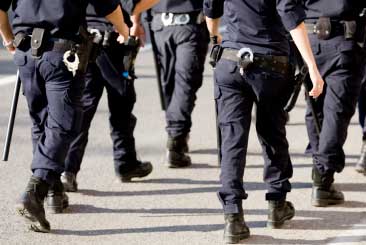|
|
| Incident Command System/Incident Management System Part II |
| By Fred Lovell |
| Published: 06/17/2013 |
 In part I we discussed the five technical priorities of ICS/IMS and the benefits of utilizing the systems over not having designated response assets. In this article we're going to discuss the three command modes of ICS/IMS and how each can benefit our facilities.
In part I we discussed the five technical priorities of ICS/IMS and the benefits of utilizing the systems over not having designated response assets. In this article we're going to discuss the three command modes of ICS/IMS and how each can benefit our facilities.
IMS/ICS is usually activated for any incident that is out of the ordinary and where additional resources may or may not be needed. It is also important understand that those actively involved in the ICS itself cannot assume roles inside the command structure. When ICS is activated by an officer or staff member who is being assaulted or is otherwise actively engaged the first person on scene will assume command. For example if I’m involved with the fight with an inmate, I would activate the ICS/IMS and then give a brief initial report that will include; who I am, where I’m located, what’s going on, and what I need. This can sound is simple as “this is Lieut. Lovell I’m activating ICS, I’m fighting with an inmate in seven building H pod 3 section I need help.” As you can see this activation is short gets required information out and because I’m involved actively in the ICS the first person on scene will assume command and designate other resources that may or may not be needed. Now let’s look at an ICS activation where there are a group of inmates fighting and I’m not engaged, “this is Lieut. Lovell I’m activating ICS I have six inmates fighting with weapons in 7 building H pod 3 section I needed an A-team response video camera medical on standby I’m in command.” Each organization has their own way of activating ICS/IMS so ensure that you follow your own agencies protocol. But make sure you get all the information that’s required so there is no delay in response. Now that we’ve discussed what ICS/IMS is and how to activate it, let’s talk about the three command modes of the systems.
Finally if at all possible when transferring command the leaving commander should have a face-to-face conversation with the oncoming commander, this will help ensure that all information is accurate and there is no miscommunications. In the next article we will discuss escalating levels of response as well as responsibilities of each member of the incident management system/incident command system team. Corrections.com author, Lieutenant Fred Lovell, is currently a shift Lieutenant for The Texas Department of Criminal Justice at the John B Connally Jr Unit in Kennedy Texas and has almost 10 years in corrections. Prior to working for the Great State of Texas he worked as a Correctional Officer and Sergeant in Arizona where he also taught at the ASPC Kingman Correctional Officer Training Academy. Other articles by Lovell: |
MARKETPLACE search vendors | advanced search

IN CASE YOU MISSED IT
|


Comments:
No comments have been posted for this article.
Login to let us know what you think